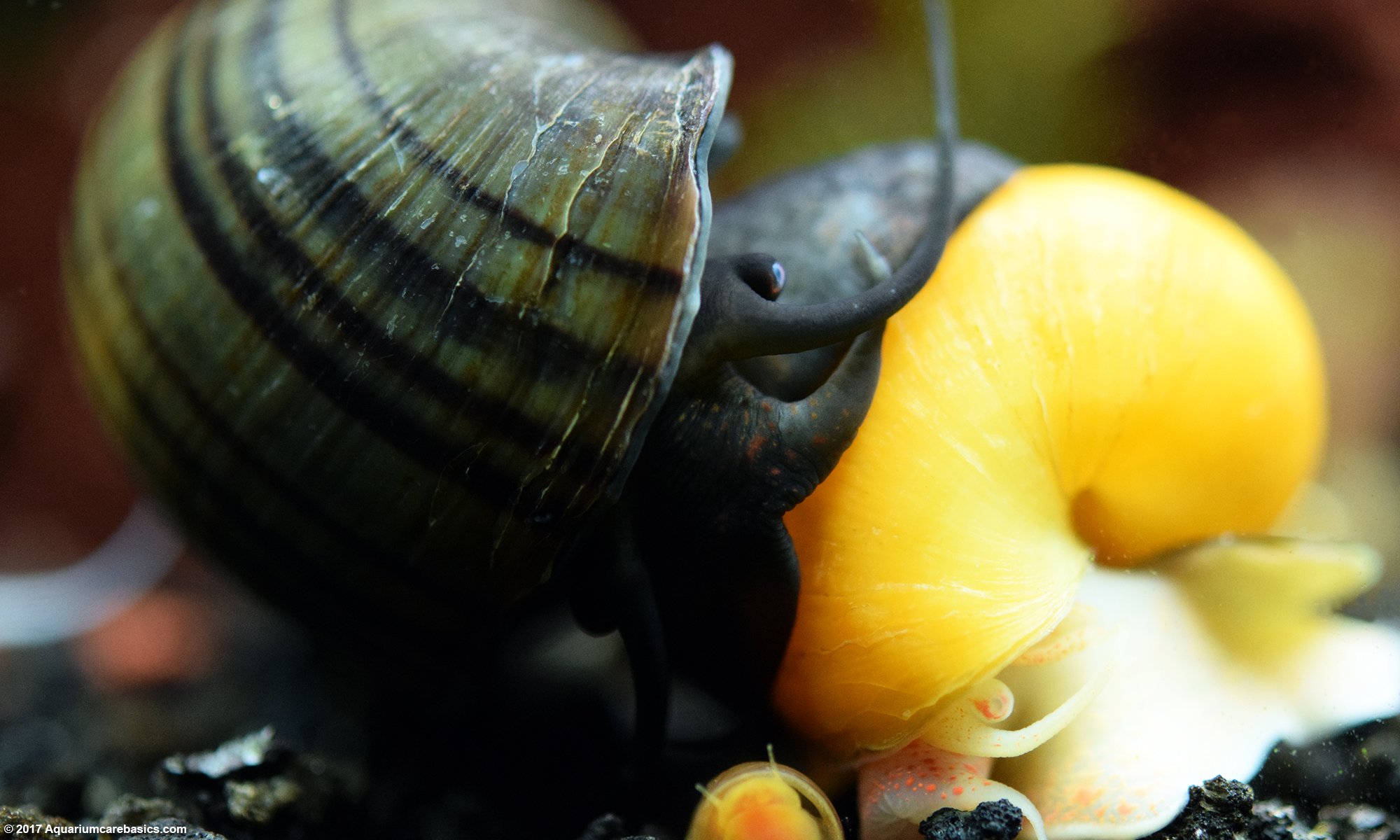
Chlorine can be harmful to their delicate skin and can even lead to death. MAINTENANCE OF GENETIC VARIATION IN IMMUNE DEFENSE OF A FRESHWATER SNAIL.

The possi6le role of parasites in freshwater- snail population genetics has also been investigated.
Freshwater snail maintenance. Siphon more water out of the tank from the bare side of the tank then spread the substrate again at the base of the tank. Clean the filter and the pumps. Check for escapees and put them back in the tank.
Let the debris in the bucket water settle down before adding it back to the aquarium. Provide your snail with food. One of the biggest needs your snail will have is adequate food.
If your snail doesnt have enough food it will go hungry but with too much food the water quality will quickly deteriorate. Most snails enjoy having plants in the tank to graze on. Snails need to be kept at temperatures between 14 and 28 degrees Celsius 57-82 Fahrenheit for them to reproduce.
This range will also ensure that the eggs are kept at a steady optimal temperature for hatching to take place. Snails tend to be temperature-dependent in their hatching patterns. We examined this prediction using a freshwater snail Potamopyrgus antipodarum from New Zealand.
This species of snails is useful for examining theories for the maintenance of sexual reproduction because there is con-siderable variation in the frequency of sexual individuals among populations Lively 1987 1992 as well as among. While freshwater snails are highly resilient their water does need to be clean to remain healthy. Freshwater snails do not drink water like fish but absorb it through the pores on their body similar to how amphibians breathe.
Because of this they need dechlorinated water to stay healthy. Chlorine can be harmful to their delicate skin and can even lead to death. The babies are so small to the point that they are hard to remove.
Hatchling snails may also dig into the substrate and remain undetected for a while. Aside from the negative aspect of freshwater snails some species have advantages. Snails like the mystery ramshorn nerite and trumpet snails make a good clean-up crew.
Here I compare the predictions of the major ecological hypotheses on the maintenance of sex by examining male frequency in Potamopyrgus antipodarum a. Here I compare the predictions of the major ecological hypotheses on the maintenance of sex by examining male frequency in Potamopyrgus antipodarum a. Dorota Paczesniak Jukka Jokela Katelyn Larkin Maurine Neiman Discordance between nuclear and mitochondrial genomes in sexual and asexual lineages of the freshwater snail Potamopyrgus antipodarum Molecular Ecology 22 no18 18 Aug 2013.
Your freshwater snails will typically eat algae in the fish tank decaying aquatic plants sometimes healthy ones and the leftovers of fish food if there are fishes in the tank. You can still choose to add food specifically for your freshwater snails especially if they are in a snail-only aquarium. Dive into the research topics of The maintenance of hybrids by parasitism in a freshwater snail.
Together they form a unique fingerprint. Snails Medicine Life Sciences 100. Fresh Water Medicine.
A complex of freshwater snails with three species. We also examined under laboratory conditions whether hybrids and their parental taxa. Its also a good idea to acclimate your snails slowly to brackish conditions instead of introducing them to the breeding tank immediately.
You can do this by filling the breeding tank one-third full of water from the original tank then slowly add brackish water over the course of several hours until the tank is full. Parasites and their freshwater snail hosts maintain their nutritional value for essential fatty acids despite altered algal diets Dara Babaran1 Janet Koprivnikar1 Camilla Parzanini1 Michael T. 10 June 2020 Accepted.
MAINTENANCE OF GENETIC VARIATION IN IMMUNE DEFENSE OF A FRESHWATER SNAIL. ROLE OF ENVIRONMENTAL HETEROGENEITY Otto Seppälä12 and Jukka Jokela1 3 1 EAWAG Swiss Federal Institute of Aquatic Science and Technology 8600 Dübendort Switzerland and ETH-Zürich Institute of Integrative Biology IBI B092 Zürich Switzerland. Freshwater aquarium snails are at their best at the minimum temperature range of 18 28.
This range of temperature helps them to survive and be potent in reproduction. Snails are really good at maintaining body temperature as they are both lungs and gills breather. By nature their body is compatible with any environment around them.
Nerite Snails make a great first time invertebrate and are valued by novices and experts alike. Saltwater species are a bit more high maintenance than freshwater species but still perfectly manageable for beginners. A community centered around these snails is a great starting point if you are trying your first saltwater or brackish aquarium.
Studies in freshwater snails have invesfi- gated the maintenance of sex and the evolution of selling widening a debate re- stricted mainly to plant populations. The possi6le role of parasites in freshwater- snail population genetics has also been investigated. Chopstick snails can easily live in a wide range of temperature conditions 20 30C 68 86F.
However the optimal temperature in the aquarium should be in the range of 24 27C 75 80F. Try to aim for a pH between 70 80.